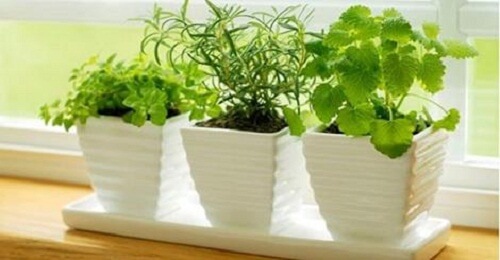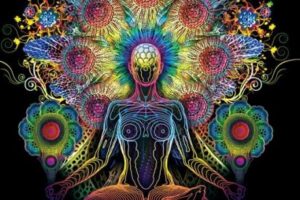식물들은 집, 사무실, 사업장 등 여러 공간들을 꾸미는 용도로 오래 전부터 사용되었다. 식물이 있는 장소에 아주 신선하고 자연스러운 느낌을 주는 것 외에도 긍정적 기운을 가져다 주고 반면에 부정적인 기운을 피하는 기능이 있다고 믿는 사람들도 있다.
이 분야의 전문가들에 따르면, 어떤 식물들은 다른 식물보다 긍정적 기운을 촉진시키고 매일 웰빙의 느낌을 줄 수 있다고 한다. 이런 식물들은 살아 있어야 하고 특별한 관리를 해 주어야 한다. 이 점을 이해한다면, 긍정적 기운을 모아주는 최고의 식물을 10가지 소개하도록 하겠다.
더 읽어보기: 스킨답서스의 특징과 효능
선인장
선인장은 아주 아름답고 우리의 집이나 사무실 공간에 여러 가지 특별한 장식으로서의 느낌을 준다. 이 식물은 특별한 관리를 유지해주어야 한다. 질투, 방해, 나쁜 사람, 위선자를 쫓아주고 가전제품에서 나오는 나쁜 전자파를 흡수한다고 알려져 있다.
더 읽어보기: 커플 사이의 여러가지 애착과 그 종류
스피어민트
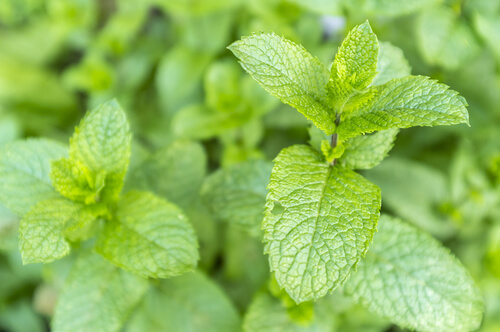
많은 건강에 좋은 장점들이라는 것 외에도 스피어민트는 저주와 다른이의 질투를 막아주는 데 사용되었다. 스피어민트는 당신의 행복을 위한 식물이며, 어떤 이는 신선한 스피어민트 식물이 경제적인 번영을 가져온다고 믿고 있기도 하다.
대나무
대나무는 집 안의 장식으로서도 멋있으며, 거실에 심오한 느낌을 주기도 한다. 또한 긍정적 기운을 모아주는 식물로도 인기가 있다. 이 식물을 집에서 키우면, 편안함과 고요함을 주며 질시의 기운을 쫓아준다.
자스민
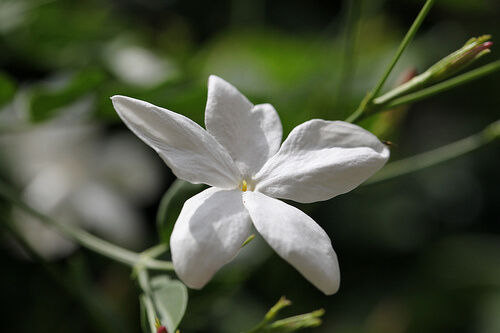
자스민은 연인의 식물로도 알려져 있다. 이는 영적인 세계에서의 관계에 이점을 가져다 준다고 믿어지기 때문이다. 이 식물을 침실이나 연인들이 함께 시간을 자주 보내는 곳에 놓아두는 것이 권장된다. 왜냐하면 자스민이 연인 관계를 강하게 해주는 긍정적 기운을 모아주기 때문이다.
로즈마리
로즈마리는 고대부터 많은 문명에서 사용되어져 온 약효가 뛰어난 식물이다. 영적인 수준에서 이 식물은 진정한 사랑과 행목을 가져다 준다고 알려져 있다. 신선한 로즈마리를 집에서 키우는 것 외에도 로즈마리 가지 몇 개를 옷가방 안에 넣어 놓거나 집 안의 몇 군데에 놓으면 주변인의 신의를 얻을 수 있다.
민트
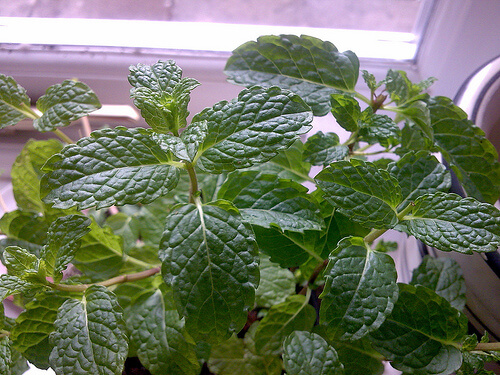
민트는 다양한 많은 약효를 가지고 있는 식물이다. 이 식물을 집에서 키우면 일반적인 건강에 이득이 될 뿐만 아니라 어떤 환경에서도 긍정적 기운을 촉진시켜준다. 민트는 나쁜 기운과 싸우고 불면증에 도움이 된다고 알려져 있다. 또한 집에서 의사소통을 개선하는 데 도움을 주기도 한다.
백리향
백리향은 고대로 부터 공기 중의 나쁜 기운을 없애는 데 사용되었다. 이 식물은 정화 식물로 여겨진다. 나쁜 기운과 싸우고, 악몽을 막아주고 자존감을 향상시켜주기 때문이다. 집에서 백리향을 한 그루 키우면, 이 식물이 집과 그 식구들을 보호해 줄 것이다.
국화
국화는 그 아름다움과 집에 행복을 가져다 주는 것으로 잘 알려져 있다. 이 식물은 행복과 좋은 분위기를 촉진하기 때문에, 지속적인 긴장이나 토론이 있는 곳에 놓으면 좋다. 국화는 휴식의 삶과 연관되어 있다.
유칼립투스
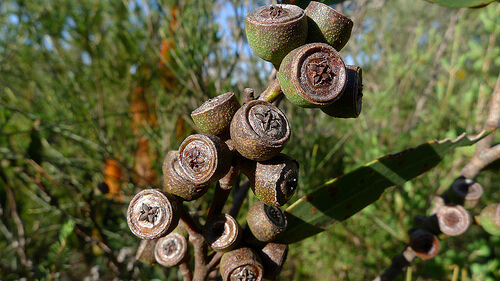
이 식물은 질시나 악의에 차 있는 사람들을 항상 따라다니는 나쁜 기운과 싸우고 이를 물리쳐주는 효능이 있다. 사업장이나 사무실에 놓아 두는 것을 추천한다. 번영을 가져다 주는 식물이기 때문이다. 또한 더 나은 수면을 취하게 해주고, 억눌려 있는 기운을 활성화시켜 주기도 한다.
알로에
알로에는 불운과 질시를 쫓는 의식에 사용되었던 식물이다. 나쁜 기운에 대항할 수 있는 가장 강력한 식물 중 하나라고 한다. 집 안의 어디에 놓던지 번영과 긍정적 기운을 가져다 준다고 알려져 있다. 많은 사람들이 알로에가 자라고 건강할 때에는 좋은 행운을 가져다 준다고 믿는다. 그리고 만약 알로에가 시들면 그것은 나쁜 기운을 흡수하고 우리를 보호했기 때문이라는 것이다.
참고 문헌
모든 인용된 출처는 품질, 신뢰성, 관련성 및 유효성을 보장하기 위해 저희 팀이 철저히 검토했습니다. 이 글의 참고 문헌은 신뢰할 수 있으며 학문적 또는 과학적 정확성을 갖춘 것으로 간주되었습니다.
- Akbari, F., Rezaei, M., & Khatony, A. (2019). Effect of peppermint essence on the pain and anxiety caused by intravenous catheterization in cardiac patients: a randomized controlled trial. Journal of pain research, 2933-2939. https://www.tandfonline.com/doi/full/10.2147/JPR.S226312
- Avila, R., Navarro, A. R., Vera, O., et al. (2011). Romero (Rosmarinus officinalis L.): una revisión de sus usos no culinarios. Ciencia y mar, 15(43), 23-36. https://biblat.unam.mx/es/revista/ciencia-y-mar/articulo/romero-rosmarinus-officinalis-l-una-revision-de-sus-usos-no-culinarios
- Botello, M. G., Avello, M., García, M. L., et al. (2020). Usos terapéuticos de la aromaterapia con lavanda (Lavandula angustifolia): revisión integrativa de la literatura. Rev. iberoam. Educ. investi. Enferm, 10(1), 48-56. https://www.enfermeria21.com/revistas/aladefe/article/323/usos-terapeuticos-de-la-aromaterapia-con-lavanda-lavandula-angustifolia-revision-integrativa-de-la-literatura/
- Chen, R., Ho, K., Hong, G. & Chuang, K. (2020). Houseplant, indoor air pollution, and cardiovascular effects among elderly subjects in Taipei, Taiwan. Science of the Total Environment, 705, 135770. https://pubmed.ncbi.nlm.nih.gov/31972932/
- Hęś, M., Dziedzic, K., Górecka, D., et al. (2019). Aloe vera (L.) Webb.: natural sources of antioxidants–a review. Plant Foods for Human Nutrition, 74, 255-265. https://www.ncbi.nlm.nih.gov/pmc/articles/PMC6684795/
- Hong, S. I., Kwon, S. H., Kim, M. J., Ma, S. X., Kwon, J. W., Choi, S. M., … & Jang, C. G. (2012). Anxiolytic-like effects of Chrysanthemum indicum aqueous extract in mice: possible involvement of GABAA receptors and 5-HT1A receptors. Biomolecules & Therapeutics, 20(4), 413-417. https://www.ncbi.nlm.nih.gov/pmc/articles/PMC3762266/
- Jun, Y. S., Kang, P., Min, S. S., et al. (2013). Effect of eucalyptus oil inhalation on pain and inflammatory responses after total knee replacement: a randomized clinical trial. Evidence-Based Complementary and Alternative Medicine, 2013, 1-7. https://www.ncbi.nlm.nih.gov/pmc/articles/PMC3703330/
- Kim, K. Y., Seo, H. J., Min, S. S., et al. (2014). The effect of 1, 8-cineole inhalation on preoperative anxiety: A randomized clinical trial. Evidence-Based Complementary and Alternative Medicine, 2014, 1-7. https://www.ncbi.nlm.nih.gov/pmc/articles/PMC4083598/
- Komaki, A., Hoseini, F., Shahidi, S. & Baharlouei, N. (2016). Study of the effect of extract of Thymus vulgaris on anxiety in male rats. Journal of traditional and complementary medicine, 6(3), 257-261. https://www.ncbi.nlm.nih.gov/pmc/articles/PMC4936652/
- Koulivand, P. H., Khaleghi, M., & Gorji, A. (2013). Lavender and the nervous system. Evidence-based complementary and alternative medicine, 2013. https://www.ncbi.nlm.nih.gov/pmc/articles/PMC3612440/
- Kuroda, K., Inoue, N., Ito, Y., et al. (2005). Sedative effects of the jasmine tea odor and (R)-(−)-linalool, one of its major odor components, on autonomic nerve activity and mood states. European journal of applied physiology, 95, 107-114. https://pubmed.ncbi.nlm.nih.gov/15976995/
- Kligler, B. & Chaudary, S. (2007). Peppermint oil. American family physician, 75(7), 1027-1030. https://www.aafp.org/pubs/afp/issues/2007/0401/p1027.html
- Lee, M. S., Lee, J., Park, B. J., & Miyazaki, Y. (2015). Interaction with indoor plants may reduce psychological and physiological stress by suppressing autonomic nervous system activity in young adults: a randomized crossover study. Journal of physiological anthropology, 34(1), 1-6. https://www.ncbi.nlm.nih.gov/pmc/articles/PMC4419447/
- Ma, J. (2022). Interaction with Nature Indoor: Psychological Impacts of Houseplants Care Behaviour on Mental Well-Being and Mindfulness in Chinese Adults. International Journal of Environmental Research and Public Health, 19(23), 1-14. https://www.ncbi.nlm.nih.gov/pmc/articles/PMC9739745/
- Moss, M., Hewitt, S., Moss, L., & Wesnes, K. (2008). Modulation of cognitive performance and mood by aromas of peppermint and ylang-ylang. International Journal of Neuroscience, 118(1), 59-77. https://pubmed.ncbi.nlm.nih.gov/18041606/
- Oh, Y. A., Kim, S. O. & Park, S. A. (2019). Real foliage plants as visual stimuli to improve concentration and attention in elementary students. International Journal of Environmental Research and Public Health, 16(5), 1-12. https://www.ncbi.nlm.nih.gov/pmc/articles/PMC6427160/
- Rodríguez, J., Cervantes, F., Arámbula, G., et al. (2022). Lirio acuático (Eichhornia crassipes): una revisión. Agronomía Mesoamericana, 33(1). https://www.redalyc.org/journal/437/43768481006/html/
- Rahbardar, M. G. & Hosseinzadeh, H. (2020). Therapeutic effects of rosemary (Rosmarinus officinalis L.) and its active constituents on nervous system disorders. Iranian journal of basic medical sciences, 23(9), 1100-1112. https://pubmed.ncbi.nlm.nih.gov/32963731/
- Sayorwan, W., Ruangrungsi, N., Piriyapunyporn, T., Hongratanaworakit, T., Kotchabhakdi, N., & Siripornpanich, V. (2013). Effects of inhaled rosemary oil on subjective feelings and activities of the nervous system. Scientia pharmaceutica, 81(2), 531-542. https://www.ncbi.nlm.nih.gov/pmc/articles/PMC3700080/
- Wang, Y., Jiang, M., Huang, Y., et al. (2020). Physiological and psychological effects of watching videos of different durations showing urban bamboo forests with varied structures. International Journal of Environmental Research and Public Health, 17(10), 1-18. https://www.ncbi.nlm.nih.gov/pmc/articles/PMC7277438/
- Zeng, C., Lyu, B., Xie, S., et al. (2019). Benefits of a three-day bamboo forest therapy session on the psychophysiology and immune system responses of male college students. International journal of environmental research and public health, 16(24), 1-17. https://www.ncbi.nlm.nih.gov/pmc/articles/PMC7246605/
